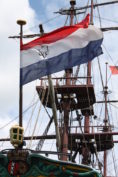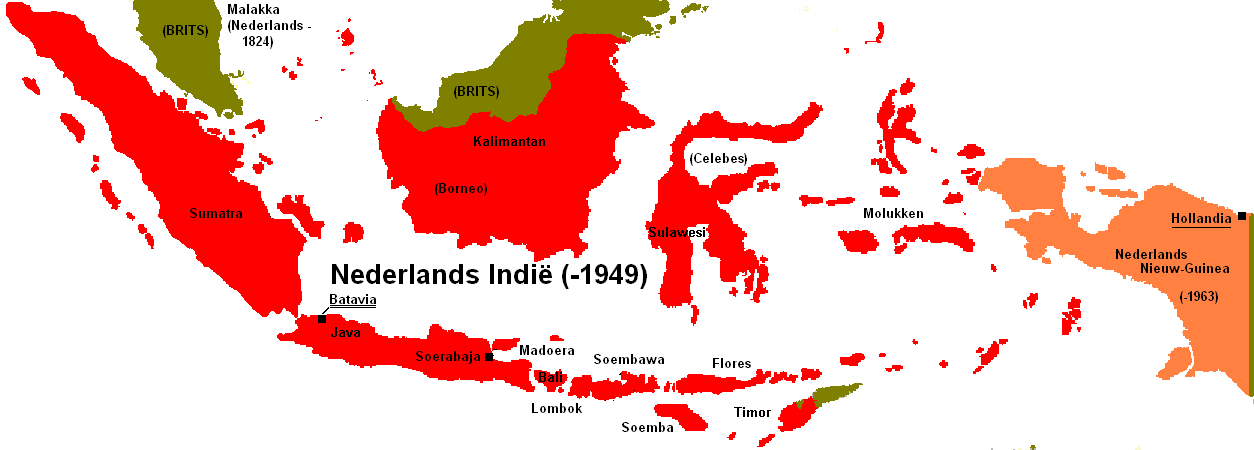Shaolin Kempo is an eventful piece of colonial history! Who deals with the background of our martial art, quickly comes across terms such as KNIL, colonies and wars of independence. A closer look at this history is worthwhile, because the effects are still clearly noticeable today, especially for Kempoka. Kempo and the colonies – historical roots of Shaolin Kempo!

With the beginning of the modern age, the era of the discoverers began in Europe. That is why we speak of modern times. People began to question the fairy tales of the sect with the cross and no longer just adhere to the dark superstitions of the Middle Ages. Well … they “started” it at that time, but we are not finished with it until today. But that is another topic!
The earth was no longer considered a disk, but rather a formidable challenge for all adventurers and conquerors. With their wooden sailing ships, a race for resources, riches and spheres of influence began. Driven by an alliance of egotistical and absolutist rulers and rather unscrupulous, others call it daring, merchants, spurred on and legitimized by a missionary Christian church – since the 17th century, everything outside Europe was no longer safe from the colonialists, their crosses and cannons.
Off to the East
As part of this self-image, Dutch ships also set out to seize the riches of the (as yet) uncolonized world. Gold, of course, was always available, but spices were also a hot commodity that could be sold at enormous profit. One had an idea of the direction in which one had to sail in order to get the stuff, because one or the other herb had already reached European latitudes via the Orient. As early as 1499, the Caribbean Lesser Antilles and Surinam in the Far East had been discovered. About 100 years later, by now Spain and the Netherlands were at war, fleets of Dutch merchants and their soldierly escorts set out to visit the “Spice Islands”. From 1595 to 1601, more than 65 Dutch ships left the familiar waters of the North Sea and sailed toward the sunrise. At first, all on their own account. But it soon became clear that, despite all the competition, it was better to act together. Thus the “Verenigde Oost-Indische Compagnie”, or VOC for short, was founded. In 1619, the city of Batavia on Java was founded.
For the first few centuries, the trading nations in this region of the world were generally content to establish and fortify trading posts. As long as the ruble was rolling, the Europeans were not interested in further annexation of the interior and left the inhabitants more or less alone. Nutmeg and cloves brought wealth to Europe. The Dutch gradually appropriated more and more trading posts, including those of the British or Portuguese, and became the dominant trading power in Southeast Asia. Only the Moluccas, a group of islands in what is now Indonesia, was almost completely occupied. They had revolted when they realized that they were being exploited by their foreign colleagues with white skin. The consequence was the brutal suppression of any resistance and the deportation of the inhabitants of the Banda Islands, which belong to the Moluccas. Coincidentally, some VOC colleagues just had the desire and time to cultivate the land themselves.
Going for the whole hog
Things only became really uncomfortable for the region when the colonial powers began to feel so morally superior that the “savages” had to be taught some real manners. In addition, Islam continued to spread, and people were also very hostile to it. Spurred on by the church department, it was now first missionary work and then subjugation. Those who did not comply were bumped off in the name of charity. Until the 19th century, this activity remained limited to the coastal strips of the Dutch Indies. But then the Dutch crown opened its overseas territories to individual entrepreneurs as well and began not only to exploit its overseas territories, but also to provide them with administration and organization based on the European model.
For most locals, this was not a happy thought on the part of the European foreign rulers. But there were also positive aspects. At least for those who made common cause with the colonial powers. For example, after one of the numerous uprisings and small wars (in this case the Java War of 1825-1830), the Netherlands established its own colonial army – the ‘Koninklijk Nederlands-Indisch Leger’ (Royal Dutch Indian Army/KNIL). This army was mainly responsible for maintaining “internal order”. Most of the members of this army were natives, only the officers came from the small country on the North Sea. Since the Moluccas had long been under direct Dutch influence, Christianity had prevailed here, while everywhere else Islam was dominant. This ensured that especially Moluccans became members of the KNIL. They were simply trusted more. Especially from the main island of the Moluccas, Ambon, came quite a few of the native KNIL soldiers.
The Christian Moluccans were proud of their close ties to the Netherlands and its royal house. A relationship with consequences, because also due to their better school education many could read and write and were thus gladly employed in the colonial administration. They called themselves “de zwarte Nederlanders,” the black Dutch (although there were indeed black colonial soldiers in the service of the KNIL, namely the Belanda Hitam). This close bond lasted and strengthened through quite a few decades. During the Second World War, the KNIL fought together with the Dutch against the Japanese. And even after their departure, the soldiers of the KNIL stood faithfully by the side of the returning Europeans, who wanted to continue the old times.
Brutal fight for independence
The world had changed. The peoples of Southeast Asia were no longer willing to accept European foreign rule. And so a broad-based struggle for independence began in the Dutch Indies as well. At the same time, the colonial powers lost their supposed moral superiority. People in Europe also began to question their actions overseas. And what took place in the decades-long struggle was anything but moral. After a long struggle, the Indonesian troops prevailed in a brutal war with enormous civilian “casualties.” The international reputation of the Netherlands was amply tarnished by numerous crimes against the Indonesian people. And the reputation of the KNIL within Indonesia was completely down anyway.

On 27.12.1949 Indonesia declared itself independent. This ended a good 400 years of Dutch colonial influence and the existence of Dutch India.
But not everyone was happy with this development. The Moluccans in particular feared both the revenge of the surrounding neighbors and, in the long run, Islamization and alienation by the Indonesian government on Java. So the small island group declared itself independent in 1950. They believed they had the support of the Netherlands, after all they had fought together for decades. This was a big mistake, because the Indonesian army attacked and occupied Ambon, the main island of the Moluccas, as early as September 1950. Both the international community and the Dutch initially looked the other way, abandoning their loyal allies. When it became clear that the situation was becoming more and more threatening, especially for the Moluccan members of the KNIL who did not want to join the Indonesian military, it was decided in The Hague to bring the soldiers and their next of kin to the Netherlands.
 The new unloved homeland
The new unloved homeland
On February 20, 1951, the first ship with 850 passengers left the port of Semarang for Rotterdam. By the end of June 1951, eleven ships brought the 4,000 Moluccan military personnel and their families to the Netherlands. Most of them were quartered in old military barracks or similar cozy accommodations. Initially, there was talk of the Moluccans staying only about 6 months in the clammy new environment. As is well known, this turned into decades, which still leave their mark on everyday life in Holland.
Not all KNIL soldiers were Moluccans. Carel Faulhaber, for example, the father of Shaolin Kempo, came from Java. And also Gerald Meijers alias Dschero Khan, the second founder of Shaolin Kempo, was a KNIL soldier, but not a Moluccan. Nevertheless, the term is used in Holland as a generalization for the descendants of the “Zwarte Nederlanders”, the once so proud loyal allies of the Dutch colonial masters.
This colonial-military background is important to understand what cultural and historical influences shaped early Shaolin Kempo.
If you are curious about the Dutch colonial history, you can find out more about it here:
Uni Münster – Netherlands Net
Super clear, loosely written, excellent source
70 years of Moluccans in the Netherlands
History and self-image today – in Dutch
Culture of violence – the current conflict on the Moluccas
A master thesis that takes a look at the current situation in Indonesia
The infamous Captain Westerling
An old Spiegel magazine article about the atrocities of the struggle for independence


